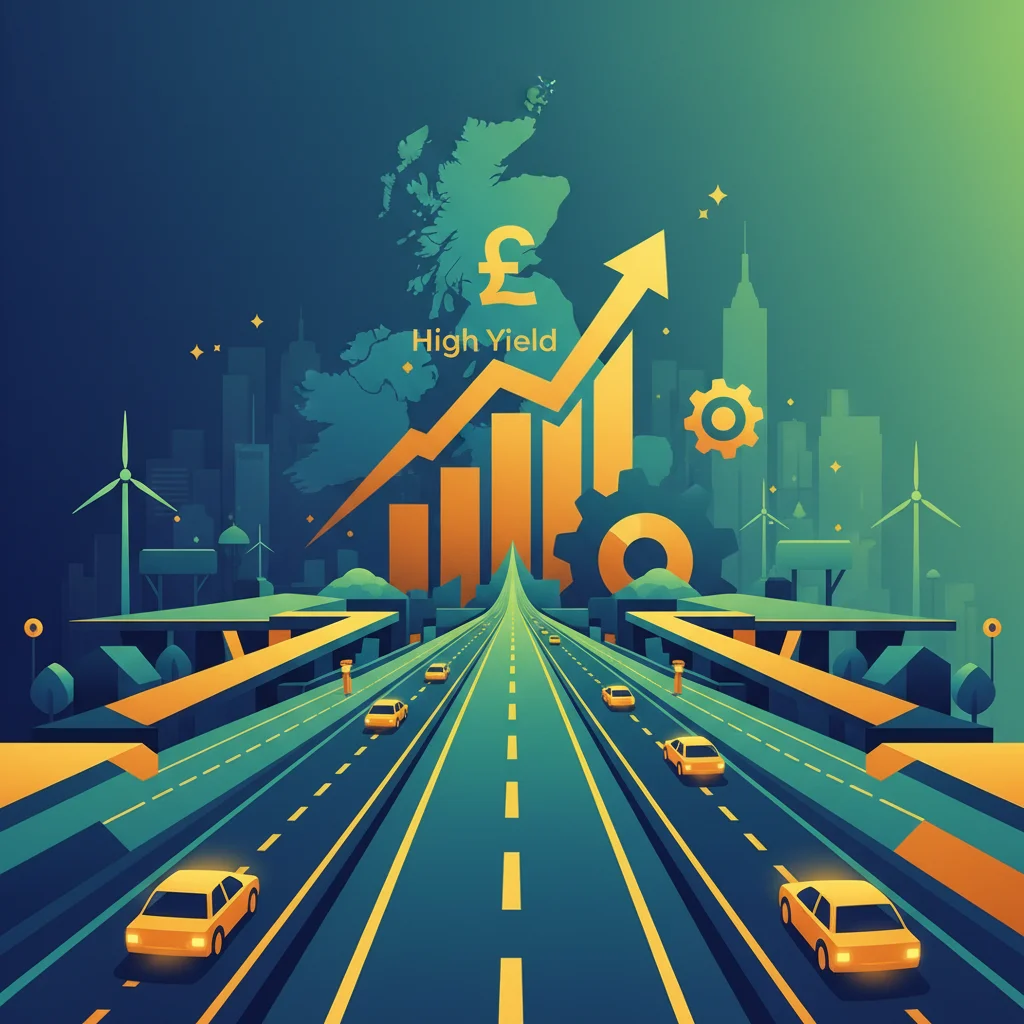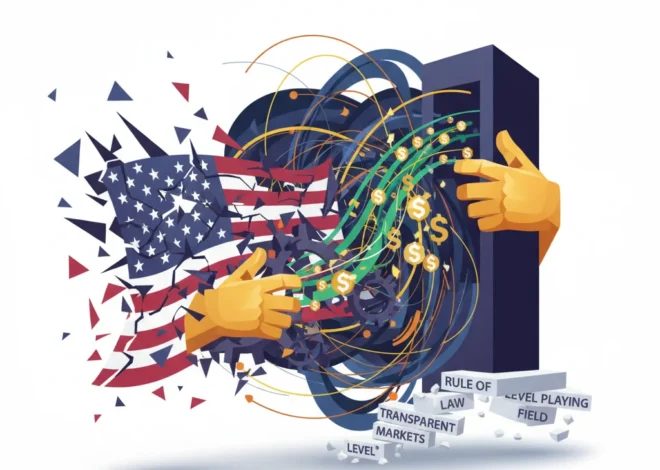
Paving the Way to Profit: Why UK Road Infrastructure is a High-Yield Investment Hiding in Plain Sight
In the modern discourse of urban planning and environmental policy, the car has often been cast as the villain—a relic of a carbon-intensive past that must be phased out in favour of public transport. While the push for greener cities is both necessary and commendable, a crucial economic truth is being overlooked: our roads are not just conduits for traffic; they are the arteries of our national economy. The argument, as presented in a compelling analysis by the Financial Times, is that neglecting our road network is not just an inconvenience—it’s a multi-billion-pound drag on our economic potential. For investors, business leaders, and finance professionals, it’s time to look past the rhetoric and see road infrastructure for what it is: a powerful, high-return investment opportunity that fuels growth across the entire stock market.
The Economic Engine Under the Hood: More Than Just Asphalt
At its core, a nation’s road network is the physical manifestation of its economic connectivity. It dictates the efficiency of supply chains, the breadth of the labour market, and the speed at which goods and services move from producer to consumer. When this system is clogged and inefficient, the entire economy sputters. Every delayed delivery, every employee stuck in traffic, and every convoluted route taken to avoid gridlock represents a tangible cost—a micro-leak in the engine of commerce that, when aggregated, becomes a torrent of lost productivity.
From a macroeconomic perspective, the health of our roads directly influences GDP. Efficient transport lowers the cost of business operations, which can lead to lower consumer prices, higher corporate profits, and increased competitiveness on the global stage. This isn’t just a matter of logistics; it’s a fundamental principle of economics. A well-funded road system is a form of national capital investment that pays dividends for decades, creating a more attractive environment for both domestic and foreign investing.
The Staggering Cost of Standing Still
To truly grasp the scale of the problem, we must quantify the cost of inaction. Chronic underinvestment has led to a state of perpetual congestion that acts as a stealth tax on the UK economy. Businesses are forced to absorb higher fuel and labour costs, delivery times become unpredictable, and the stress on the logistics sector ripples outwards, impacting everything from retail stock levels to manufacturing schedules.
These are not abstract costs. Studies consistently show that traffic congestion costs the UK tens of billions of pounds annually in lost time and productivity. This is capital that could be reinvested into innovation, job creation, or returned to shareholders. The impact on the stock market is indirect but significant; companies hampered by poor infrastructure may see suppressed earnings, impacting their valuations and the broader market indices.
Let’s break down the key economic impacts of a congested road network:
| Economic Factor | Impact of Poor Road Infrastructure |
|---|---|
| Supply Chain & Logistics | Increased fuel consumption, longer delivery times, higher operational costs for haulage companies. |
| Labour Market Mobility | Reduced access to a wider talent pool, longer and more stressful commutes leading to lower employee morale and productivity. |
| Business Investment | Companies may be deterred from expanding or setting up in areas with poor transport links, stifling regional growth. |
| Consumer Costs | Higher logistics costs are often passed on to consumers in the form of increased prices for goods and services. |
This data illustrates that investing in roads is not about appeasing motorists; it’s about underwriting the fundamental operations of our entire economy. Ignoring this is akin to a company refusing to maintain its most critical machinery.
Beyond the Boardroom: Sweden's Blueprint for Investor Power in the Digital Age
Recalibrating the Investment Thesis: From Expense to High-Return Asset
For too long, road maintenance and expansion have been framed as a burdensome expense on the public purse. The correct lens, particularly for those in finance, is to view it as a strategic investment with a quantifiable return. The UK Treasury’s own “Green Book,” which guides public project appraisals, uses a benefit-cost ratio (BCR) to evaluate viability. Historically, major road projects have shown remarkably high BCRs, often generating several pounds of economic benefit for every pound spent (source).
These returns manifest in various forms: time savings for commercial and private drivers, reduced vehicle operating costs, improved road safety, and the catalytic effect on regional economic development. When a new bypass unlocks land for commercial development or a widened motorway slashes journey times between two economic hubs, the long-term value created far exceeds the initial capital outlay. This is a core concept that should resonate with anyone involved in trading or long-term investing: identifying undervalued assets with strong growth potential. Right now, the UK’s road network is one such asset.
Driving into the Future: EVs, Autonomy, and the Enduring Need for Roads
A common counterargument is that the future is electric and increasingly urban, reducing the car’s dominance. This view misreads the trajectory of technology. The transition to Electric Vehicles (EVs) changes the fuel source, not the need for a surface to drive on. In fact, the weight of EVs may increase wear and tear on road surfaces, heightening the need for robust, well-maintained infrastructure.
Moreover, the dawn of autonomous vehicles—a sector attracting enormous venture capital and stock market attention—is entirely predicated on a high-quality, predictable, and well-mapped road system. Smart motorways, 5G-enabled corridors, and clearly marked lanes are prerequisites for this technological leap. Investing in our roads now is effectively laying the groundwork for the next generation of logistics and mobility, a move that will unlock trillions in economic value. For those in financial technology, the data streams from these future vehicles and smart roads represent a new frontier for analysis, insurance products, and payment systems.
The Peril of Prosperity: When Economic Blueprints Ignite Geopolitical Firestorms
The economic case is clear: a modern road network is the bedrock of a productive, modern economy. It supports the current logistics paradigm while enabling the technological revolutions of tomorrow. As the original FT article argues, falling back in love with the car is not about nostalgia; it’s about a pragmatic reassessment of a critical economic asset (source).
Conclusion: The Road to a Stronger Economy is Paved with Smart Investment
The debate over transportation policy must evolve beyond a simplistic anti-car narrative. We must embrace a holistic view that recognizes the immense and ongoing contribution of road transport to our economic vitality. For the general public, this means faster, safer, and less stressful journeys. For business leaders, it means more efficient supply chains and better access to talent. And for the finance and investing community, it represents a clear-eyed opportunity.
Investing in our roads is a direct investment in our collective productivity and prosperity. It’s a strategy that offers high returns, de-risks supply chains, and lays the foundation for future innovation. It’s time for policymakers and investors alike to look at the tarmac and see not a problem to be managed, but a powerful engine for growth waiting to be unleashed.
The Green Paradox: Why the Netherlands' Renewable Success Is a Critical Warning for Global Investors


